Demonstrated by Luke Chan
Photos by Gordon Baer
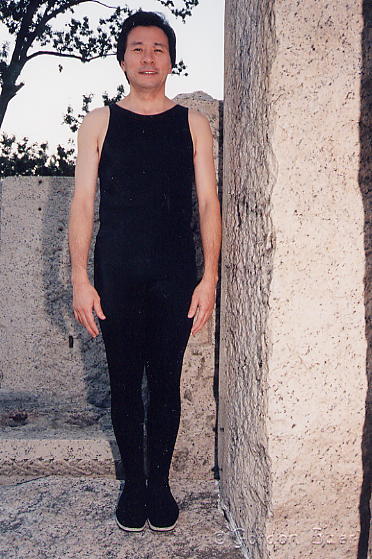
Figure One
Preparation: Calm, relax and with a purpose (Purpose varies with individuals such as heal kidneys, sex hormone balance, more energy, lungs and heart workout.).
Tips: For beginners, place your toes away from the wall to prevent falling. You can hold on to a doorknob or pole in the beginning. Keep in mind that you must face a wall (something smooth) to do the squats because the wall keeps your knees in alignment with your toes to prevent knee injuries.
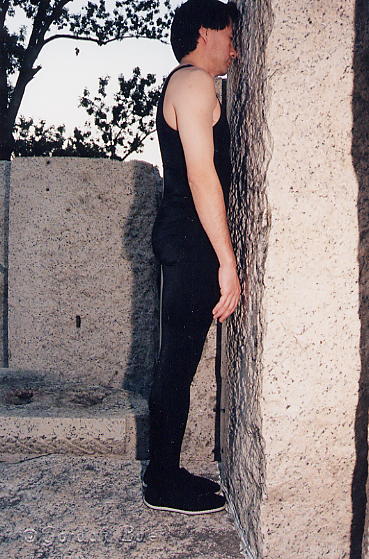
Figure 2
Going Down: Place your nose, forehead and feet close to a wall. Relax your entire body.
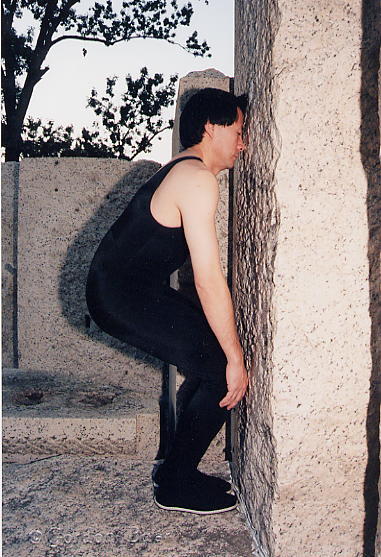
Figure 3
Going Down: Loosen up your shoulders and align them towards the wall. Slowly squat down. Round your buttock with tailbone tucking inward.
Beginners: If you cannot go down further, omit the next step and go up from this position. If you do that, you are doing half squats and still can get many of the benefits promised in doing wall squats.
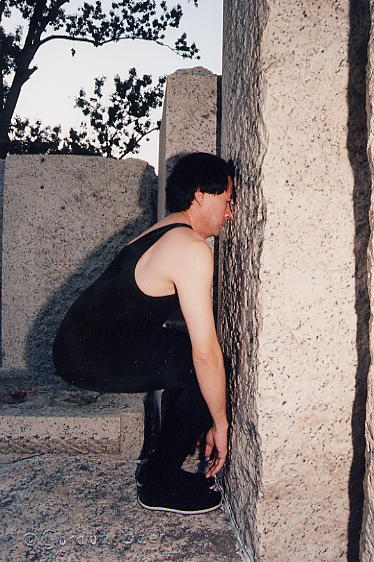
Figure 4
Going
Down:
Continue
to
lower
your
body
in
a
conscious
and
controlled
manner,
make
sure
your
speed
is
constant
and
even.
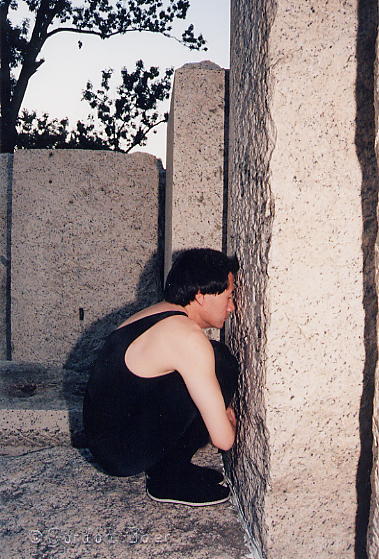
figure 5
Going Down: Squat all the way down to until you cannot go further.
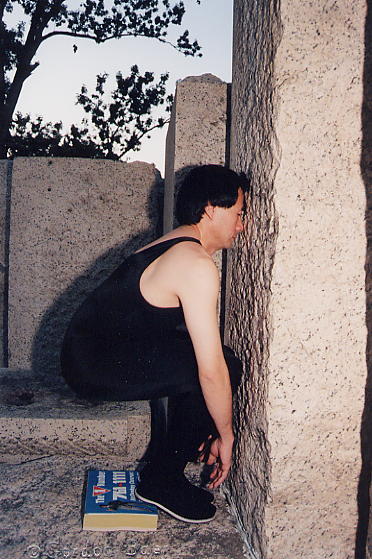
"Book" Technique for Beginners:
Place a book underneath your feet and tear out a few pages each day until you can squat all the way down.
Caution: You need to tear out the pages otherwise the book will become your crutches.
Tip: To lift your body from the bottom position, figure 5, to the midway position, Figure 4, you concentrate on the top of your head so that your mind and chi help you to move upward. If you concentrate on your feet and thighs, you will experience a lot of muscle tension and it will force you to move too quickly to avoid the stress. When you move out of sync with the release/absorb pattern, you will use pure muscle strength not the chi power.
 Figure
4
Figure
4

Figure 3
Tip: To lift your body from the midway position, figure 4, to the upper position, Figure 3 and Figure 2, you concentrate on the lower back, the mingmen area, so that your spine will spring your body up effortlessly like releasing an arrow from a bow in a slow motion.

